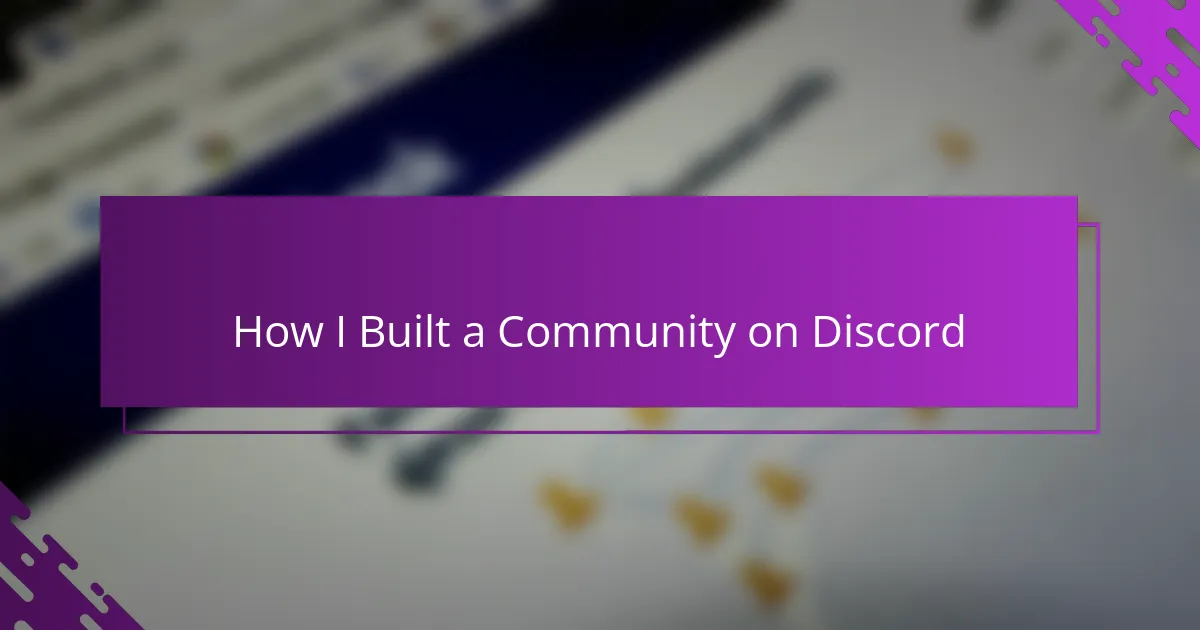Key takeaways
- A Discord community fosters connections among individuals with shared interests, creating a sense of belonging despite geographical distances.
- Choosing a specific niche and understanding members’ interests enhances engagement and builds a more meaningful community.
- Effective moderation and clear community rules promote a safe environment, encouraging active participation and trust among members.
- Ongoing engagement through regular events and personal connections sustains community growth and makes it feel vibrant over time.
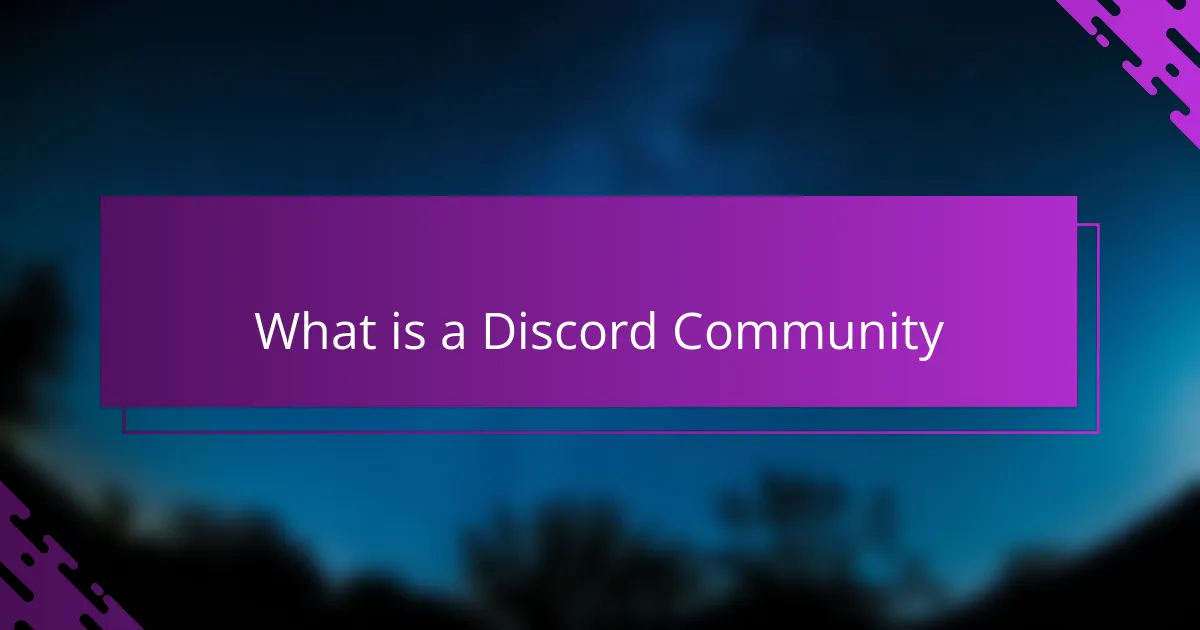
What is a Discord Community
A Discord community is essentially a virtual gathering place where people with shared interests come together to chat, share, and collaborate. From my experience, it feels less like a traditional forum and more like a lively group of friends hanging out, only it’s open 24/7.
What’s fascinating to me is how these communities create a sense of belonging, even when members are scattered across the globe. Have you ever wondered how technology can shrink distances and bring strangers into your daily life? That’s the magic of a Discord community—it’s a real, living space where connections happen naturally.
In building my own server, I’ve seen how channels within the community serve different purposes, from casual banter to focused discussions. This structure reminds me of how any real-world community has different rooms and corners, each buzzing with its own vibe and stories. It’s this diversity that makes a Discord community uniquely dynamic and engaging.
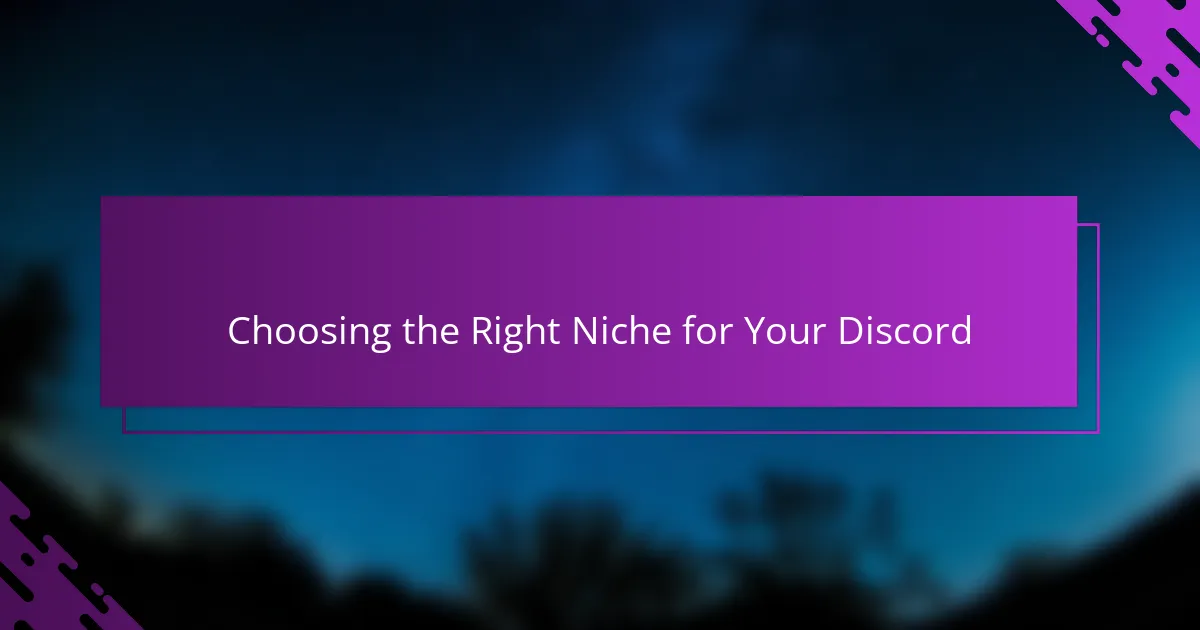
Choosing the Right Niche for Your Discord
Picking the right niche for your Discord community was, for me, a moment of clarity that shaped everything else that followed. I asked myself, “What am I genuinely passionate about, and who else might share that passion?” This honest self-reflection helped me avoid spreading myself too thin and instead focus on building a space that felt authentic.
I remember early on how tempting it was to make the community about broad topics to attract as many people as possible. But in the end, zeroing in on a specific niche brought depth and a real sense of belonging. It’s like hosting a dinner party—you want guests who care about the conversation, not just anyone off the street.
Choosing the right niche isn’t just about the topic; it’s about understanding your future members. What drives their interest? What challenges do they face? When I thought through these questions, I realized my community could be a valuable resource, not just a chatroom. That realization made me even more excited to build something meaningful.
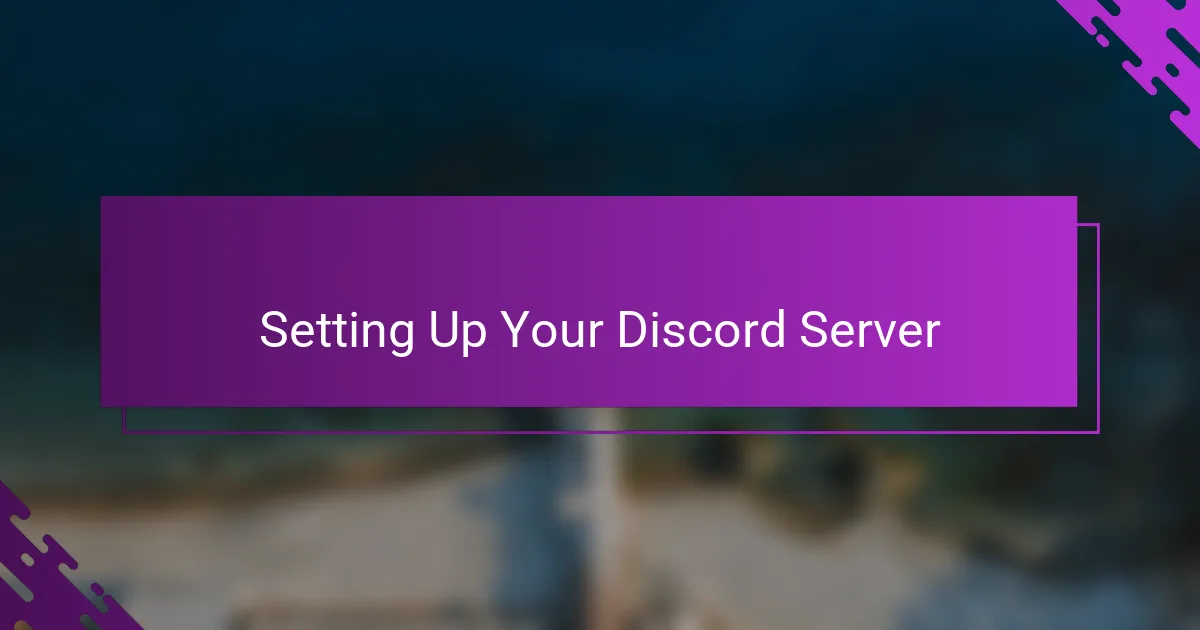
Setting Up Your Discord Server
Setting up my Discord server felt a bit like arranging the first furniture in a new home. I started by creating clear categories and channels to give the space some structure—because without that, chaos quickly creeps in. Have you ever walked into a room with no clear purpose? That’s how a server feels without organized channels.
One thing I learned early on was to keep the number of channels manageable. It’s tempting to create a channel for every tiny topic, but too many options can overwhelm new members. From experience, a few well-defined channels invite more focused conversations and make it easier for people to jump in without hesitation.
I also made sure to set intuitive permissions so everyone felt safe but still free to express themselves. Setting up moderation roles was a bit daunting at first, but it quickly became clear that trust and boundaries form the backbone of a thriving community. When members see that balance, they stick around and contribute more openly.
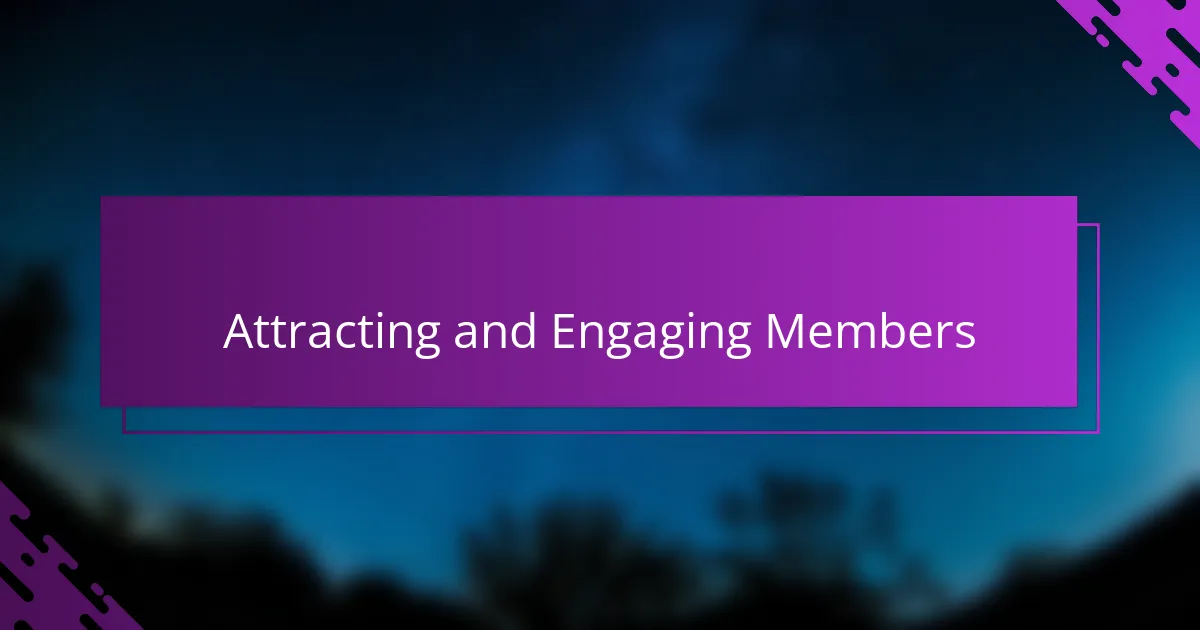
Attracting and Engaging Members
Attracting members wasn’t just about shouting into the void; it was about inviting people into a space where they felt instantly welcomed. I found that personalized greetings and a clear explanation of what the community stood for made newcomers pause and stay. Have you ever walked into a room and immediately felt like you belong? That’s exactly the feeling I aimed to create from the get-go.
Engagement, to me, grew naturally when I started hosting regular events and discussions that matched members’ interests. It wasn’t enough to just wait for people to talk—I learned to spark conversations with questions, polls, and challenges that invited everyone to share their take. When someone responds, it creates a ripple effect, turning a quiet server into a lively hub.
I also realized early on that listening mattered as much as talking. Whenever members suggested ideas or voiced concerns, I made sure to acknowledge them directly. This openness built trust and encouraged more active participation, because people want to feel heard and valued. Have you noticed how much more you engage when someone genuinely listens? That made all the difference in keeping the community vibrant.
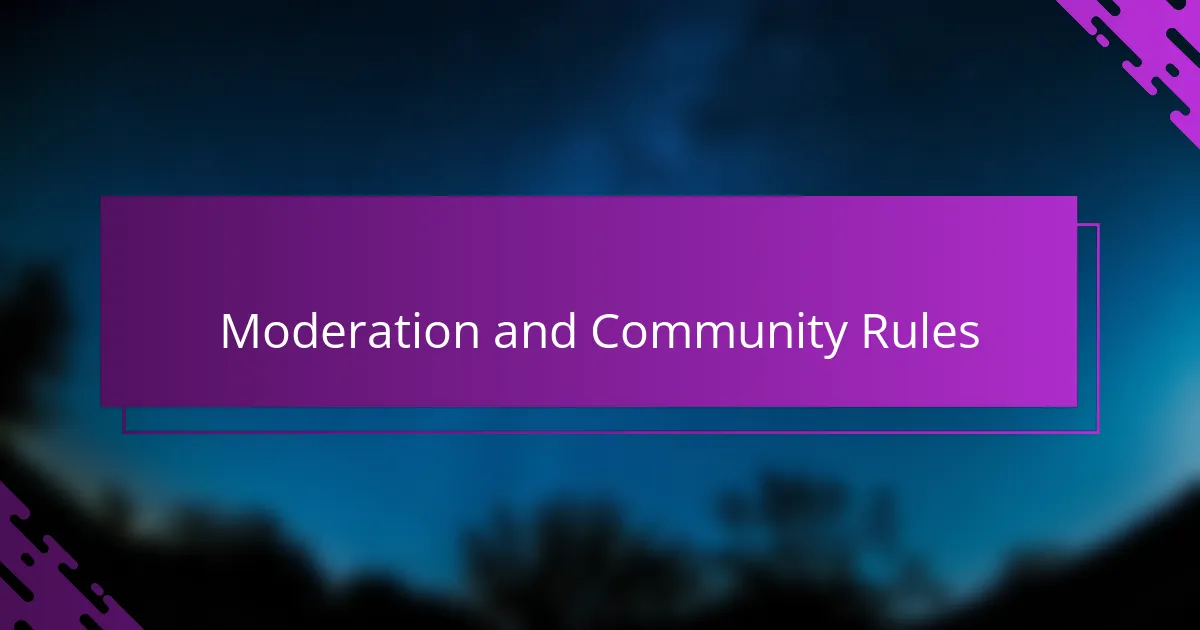
Moderation and Community Rules
Moderation is the invisible hand that keeps a Discord community feeling safe and welcoming. I quickly learned that without clear rules and consistent enforcement, even the most passionate members can become frustrated or uncomfortable. Have you ever been part of a group where one loud voice dominates or things get out of hand? That’s what moderation helps to prevent.
Creating community rules wasn’t just about listing dos and don’ts; it was about setting the tone and values I wanted to see in my server. I made sure the rules were simple and positive, focusing on respect and inclusivity, so members knew exactly what behavior was expected. This clarity helped avoid confusion and made moderation less about punishment and more about guiding the community.
What really struck me was how involving moderators I trusted turned the process from a solo burden into a shared mission. When people see that rule enforcement is fair and consistent, they feel more comfortable jumping into conversations. In my experience, strong moderation builds trust—and trust is what keeps a community thriving long-term.
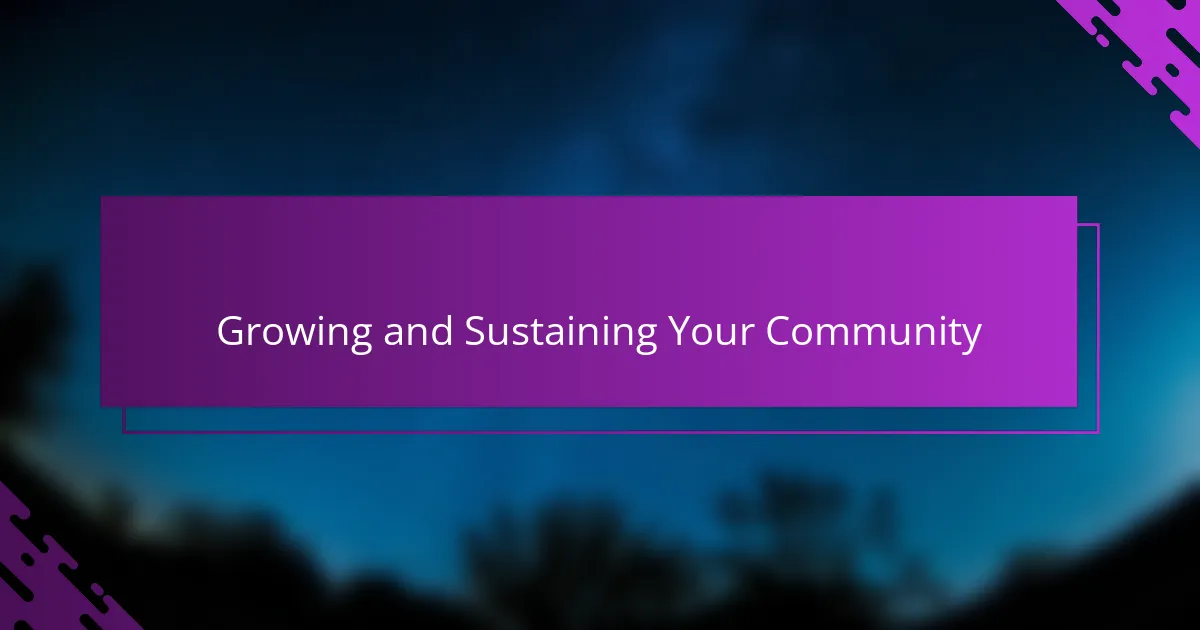
Growing and Sustaining Your Community
Growing a community on Discord is much like nurturing a garden—you plant the seeds, but the real work is in consistent care. I found that regularly checking in, sharing updates, and celebrating small wins kept members engaged and coming back. Have you ever noticed how a simple “welcome back” message can brighten someone’s day? Those little touches matter more than you might think.
Sustaining momentum can be tricky, especially when life gets busy for everyone involved. That’s why I made it a habit to create recurring events and themed days, giving members something to anticipate. From my experience, this predictable rhythm turns a casual visitor into a dedicated participant, making the community feel alive and vibrant even during slower times.
But growth isn’t just about numbers—it’s about relationships. When I took time to get to know individual members and their interests, I realized the community became a network of friends rather than just users. Don’t you think that genuine connection is what makes a space worth returning to? That’s the heart of sustaining any community.
